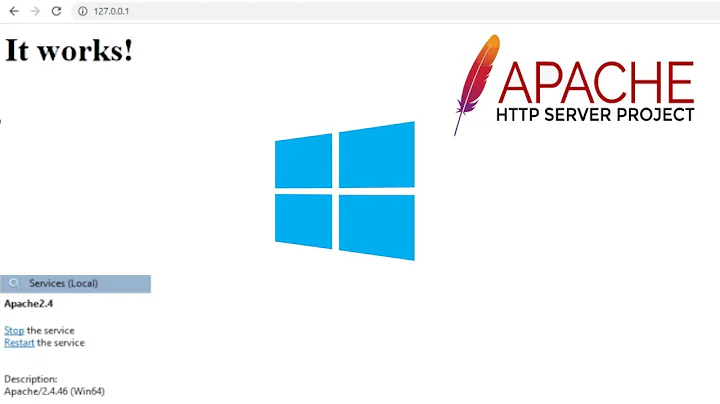Apache running but no response from server?
Solution 1
Sounds like a firewall issue if wget works from the command line.
Temporarily disable the firewall using:
service iptables stop
If it works then you know you need to add a rule to your firewall to allow port 80 and or 443.
Solution 2
On CentOS 7 or similar, check if you're running firewalld:
systemctl status firewalld
Ubuntu has ufw which is a friendlier interface to iptables. See man ufw for details.
If you see the service running, you can open port 80 by adding the http service as explained by root users:
sudo firewall-cmd --permanent --add-service=http
sudo firewall-cmd --reload
Incidentally, I once installed CentOS 7 minimal on a machine and the firewall was not installed by default. But using another ISO on another machine, it was installed on its own. And I kept checking on the wrong one, which told me that there was no firewall!
A useful command that will tell you that it's definitely the firewall is nmap:
sudo nmap -sS -O -p80 ip-address
Starting Nmap 7.01 ( https://nmap.org ) at 2017-08-11 15:56 IST
Nmap scan report for ip-address
Host is up (0.0011s latency).
PORT STATE SERVICE
80/tcp open http
If you see filtered instead of open, there's no doubt a firewall. Double check you're in the right machine if you have several terminals open!
Another quick way to check from the terminal is to use curl. On the server:
curl localhost
That should return the homepage. On another machine on the network:
curl 1.2.3.4 # use the actual host's IP address
That should also return the homepage. If you have to press CTRL+C because it sits waiting, or if you get an error like Failed to connect to 1.2.3.4 port 80: No route to host but got a response when you did it locally, it's a clear sign that something, most likely a firewall, is blocking access.
Related videos on Youtube
TreyK
Updated on September 18, 2022Comments
-
 TreyK almost 2 years
TreyK almost 2 yearsI've got a fresh Fedora 15 installation on my server that's been giving me trouble.
My first problem was that httpd wouldn't start. I kept getting an error that there was a segfault and the sysadmin eventually traced it back to a problem with mod_perl, so he removed it and httpd started fine.
I've had another very vexing problem recently, though: I get no response from Apache.
- I can SSH into my server
- I've got the right IP address
- It pings
- The httpd service is up and running
- I've got an index.html file in the webroot
- If I wget XX.XXX.XXX.XXX (the server's IP address) when SSH'd into the server itself, I get a response
But whenever I make a request to the server from any computer, regardless of ISP, I get no response - Chrome says it can't even connect. I'm absolutely stumped about how to fix it, and I've bugged the sysadmin quite a bit already. My robotics team gets this server space free from a company and I like to bug the sysadmin as little as possible about this kind of thing, but I suppose I'll have to if this question doesn't turn up any solutions.
Thanks for any help.
-
 Admin over 12 yearsHave you checked to see if the firewall is running on the server? It is possible that it is an blocking external port 80/433 requests
Admin over 12 yearsHave you checked to see if the firewall is running on the server? It is possible that it is an blocking external port 80/433 requests
-
 TreyK over 12 yearsAwesome! Thanks, that solved it! How would I go about adding exceptions for a general purpose webserver doing FTP, HTTP, and the like?
TreyK over 12 yearsAwesome! Thanks, that solved it! How would I go about adding exceptions for a general purpose webserver doing FTP, HTTP, and the like? -
enterzero over 12 yearsThis will tell you how - cyberciti.biz/tips/…
-
digitaladdictions over 12 yearsDepends on if you have a GUI installed or not. Being you are using Fedora rather than CentOS I figure there may be a chance you do. If you have the tool available and are running on a graphical dekstop using system-config-firewall may be easier. Do not go back and forth between command line and system-config-firewall though because one will overwrite the other.
-
ToUsIf almost 4 yearsAwesome, allowing port 80 and 443 solved the problem
-
HartleySan over 2 yearsI had this issue on an AWS EC2 server I created, and the fix was to enable access for HTTP and HTTPS from the security group assigned to the EC2 instance. (I always forget to do that!)




